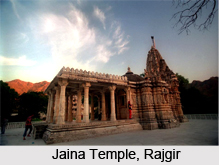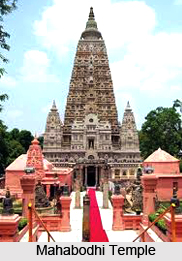Indian Buddhist sites are numerous in number which are scattered throughout the length and breadth of Asia. A majority of these renowned regions are closely associated with the life of Lord Gautama Buddha and have been visited by Buddha either for preaching Buddhist principles or for meditation. To transform himself from 'Siddhartha' to 'Sakyamuni' and then to Buddha he had travelled far and wide on various purposes. All those places that he went to are considered as Buddhist pilgrimage centres. However at some centres excavations have been carried out to know more about the great teacher. These are the historical Buddhist sites that are related with his early life. There exists four significant centres of Buddhist pilgrimage which include the birthplace of Buddha at Lumbini, the area where he achieved 'Enlightenment' known as Bodhgaya, the region which received His very first teachings called Benaras and the place where He attained 'Parinirvana' at Kushinagara.
Bodhgaya
Bodhgaya is one of the most well known places for Buddhists which lies in the eastern Indian state of Bihar. The most important attraction here is the Bodhi tree under which Gautama attained Enlightenment. Another attraction here is the Mahabodhi Temple. It is believed to have been built by emperor Ashoka.
Sarnath
The Deer Park in Sarnath is the place where Buddha delivered his first discourse, through which he had preached the 'four noble truths' and their associated principles. The place is situated near Varanasi, Uttar Pradesh. Today there are some of most exquisite Buddhist monuments in Sarnath. Probably the most important of them all is the Ashokan Pillar. A Buddhist temple and the ruins of the several monuments add to the beauty of this historical Buddhist site.

Kushinagar
Kushinagar town in Uttar Pradesh is the site where Lord Buddha attained Parinirvana following His demise and it was referred to as 'Kushavati' or 'Jatakas' during ancient periods. Ramayana has mentioned about this region as 'Kusha' city, named after Rama's son. Buddha attained 'Mahaparinirvana' or the 'Final Nirvana', immediately after he had consumed meals prepared with mushrooms. The 'Viharas' and 'stupas' located here belong to the 3rd or 5th century CE and Ashoka had erected several Buddhist monuments here.
Rajgir
Rajgir, situated in Bihar was once a capital of the Magadha kingdom which later developed into Mauryan Empire and is believed to have come into existence during 1000 BC. It is a notable Buddhist site as the 'Atanatiya' conference was held here, at the mountain of the Vulture's Peak. Lord Buddha had been engaged in deep meditation for a considerable amount of time and delivered His lessons at 'Gridha-Kuta' or the Hill of the Vultures. Some of the most famous sermons were taught here and King Bimbisara had converted to Buddhism at Rajgir.
